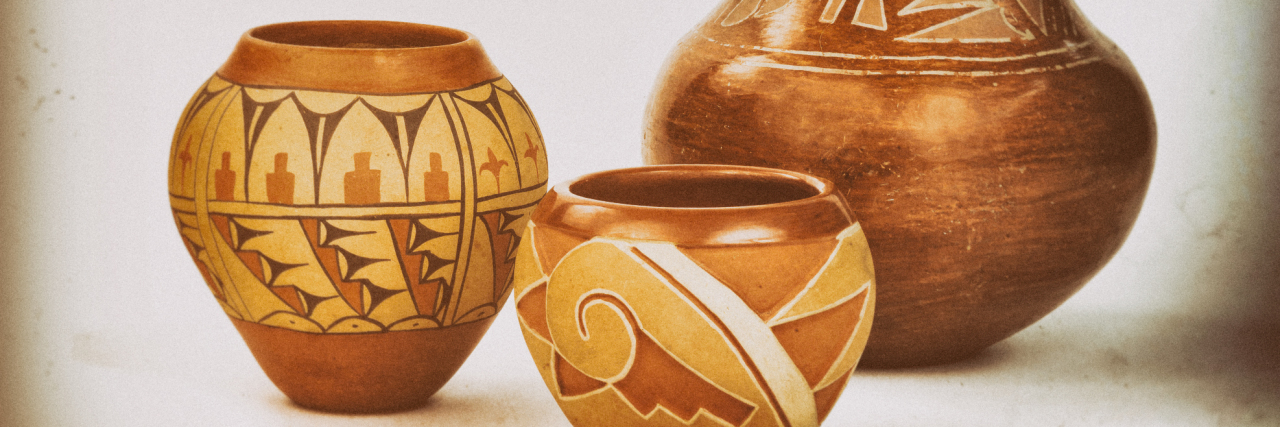When My Disabled Body Becomes an Artifact to Be Observed
I recently vacationed to Washington, D.C. with one of my best friends from college. We thoroughly enjoyed catching up after six months apart, reminiscing about a college Vegas trip I’m still trying to piece together. And while it is humanly impossible to visit every exhibit at every museum, we sure tried, returning home far wiser and more exhausted than we arrived.
Washington, D.C. is a living, breathing tribute to the American story; its monuments and histories document the struggle of the American dream and the steep price of freedom. As such, D.C. summons people from every corner of the country; I saw a little four-person family from Iowa, a class field trip from New York, an Asian woman getting married in front of the Lincoln Memorial. Washington D.C. is a watering hole from which Americans quench their thirst for identity. But while my eyes were fixed on historical relics and object labels, the people around me were fixated on something else.
I have been using a power wheelchair for the majority of my life as a result of muscular dystrophy— though I typically conclude that statement with “but the worst thing that has ever happened to me was ‘Basic Instinct 2.’” Although one might think I must be used to the prying eyes of the public, it still catches me off guard.
I maneuvered through many museums in Washington, D.C., crowds parting ways like the Red Sea before my wheelchair. Their eyes wander from displays of historical relics to me. They stare at my chair, their eyes slowly travel up my body, they stare at my face, and if we make eye contact, they awkwardly nod and quickly turn away. It happened every couple feet. At every museum. And every moment in between.
Of course, I initially go on the defensive. My first instinct is to say, “Look at the screen. Hitler is currently invading Poland and that’s way more important than staring at my wheelchair.” I try to get into the mind of my spectators. What if they have never seen a wheelchair before? Do I say something abrasive? Do I say something kind? Do I ask them why they stare? Does intent matter when their eyes roam my body and wheelchair before I have spoken a word?
As eyes keep piling on eyes, I shrink beneath their speculation, consumed by self-awareness and self-doubt. I drown in the question of intention and swallow buckets of tolerance. Sitting in that museum, I couldn’t bring myself to look back, and instead stared straight ahead at the display before me.
And in that moment, I saw something.
It was a dimly lit work of pottery, intricately designed for festivities by an American Indian tribe. I studied the design, followed its curves, noted its cracks. And it hit me like a freight train.
I too am an artifact.
I am an artifact begetting curiosity and intrigue. I am an artifact of weakness. I am an artifact spoken at, spoken about, and spoken for. I am an artifact of “But you’re so pretty for a girl in a wheelchair,” and “Go, speedracer, go!” I am an artifact of fear. I am an artifact of bravery. I am an artifact of the narrative that a disabled life is an unworthy life. I am an artifact for reasons I would never choose as the description beside my display. And as an artifact, no matter where I go, I will always have an audience of observers lined up to stare at my art.
Perhaps that should make me feel discouraged. Perhaps even powerless. Because how is it fair that the world gets to stare at an artifact and choose its origin and history?
But staring at that beautiful pot, with its cracks and paint and wear, I refused to let my speculators render me powerless. For my power will never come from the intention of an observer — because intention does not change the way it feels when a person stares at your body for minutes at a time. I cannot sit down with every one of my observers to explain my passions, personality, and aspirations. So where does my power come from in a momentary interaction with a stranger when I feel scrutinized?
My power comes from the floral dress I have chosen to don. It comes from the stilettos I have strapped to my heels. It comes from the pink I have painted on my cheeks and the arc I have drawn in my brows. It comes from the jewelry that adorns my ears and the ink that is embedded in my skin. My power comes from the design I will display, the exhibit I will choose, and the labels I shall write. Because if the world insists that I am an artifact…
I am going to be the greatest piece of art you have ever seen.
Follow this journey on Fishing.
We want to hear your story. Become a Mighty contributor here.
Thinkstock photo by Digital Farmer.

